I have a dataframe that looks like this:
df = pd.DataFrame(columns=["type", "App","Feature1", "Feature2","Feature3",
"Feature4","Feature5",
"Feature6","Feature7","Feature8"],
data=[["type1", "SHA",0,0,1,5,1,0,1,0],
["type2", "LHA",1,0,1,1,0,1,1,0],
["type2", "FRA",1,0,2,1,1,0,1,1],
["type1", "BRU",0,0,1,0,3,0,0,0],
["type2", "PAR",0,1,1,4,1,0,1,0],
["type2", "AER",0,0,1,1,0,1,1,0],
["type1", "SHE",0,0,0,1,0,0,1,0]])
I want to make a stacked bar with type as a hue. This is, in the x axis I want the features, and for each feature I want 2 stacked bars, one for type1 and one for type2.
For instance, here they explain how to make a stacked bar plot with seaborn when the column type is dropped. Instead, I want for each feature two stacked bars. Note: the values of App are shared for type1 and type2
For instance, if I just plot the stacked bars corresponding to type1, I get this:
I want to make a stacked bar plot where for each feature there are two stacked bars, one for type1, and the other one for type2
